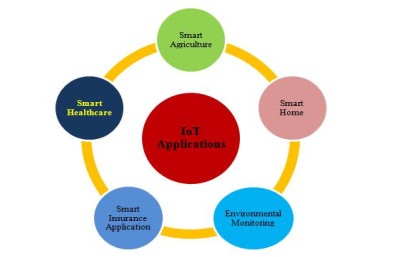Report on Proposed Solid Waste Management Enhancements in El Dorado County
Introduction and Strategic Context
El Dorado County is undertaking a strategic review of solid waste management services for the residential corridor between Emerald Bay and Tahoma. This initiative aims to enhance environmental protection and public health, directly aligning with key principles of sustainable development. The evaluation, led by County Supervisor Brooke Laine, is exploring several options to improve current waste disposal systems, with a focus on creating a more sustainable and resilient community.
Alignment with UN Sustainable Development Goals (SDGs)
The proposed enhancements to waste collection services are fundamentally linked to the global 2030 Agenda for Sustainable Development. The initiative directly supports the following SDGs:
- SDG 11: Sustainable Cities and Communities: By improving municipal waste management (Target 11.6), the county aims to reduce the adverse per capita environmental impact of the community, creating a cleaner, safer, and more sustainable living environment for all residents.
- SDG 12: Responsible Consumption and Production: A formalized collection system is a critical step toward substantially reducing waste generation through prevention, reduction, and recycling (Target 12.5). This promotes a circular economy and minimizes landfill dependency.
- SDG 14: Life Below Water & SDG 15: Life on Land: Proper waste containment is essential to prevent pollution of the sensitive ecosystems of the Lake Tahoe basin, protecting local biodiversity and natural resources from the harmful effects of improperly disposed waste.
- SDG 3: Good Health and Well-being: Effective and universal waste management mitigates public health risks associated with pests and pollution, contributing to the overall well-being of the community.
Key Proposal Under Consideration
A primary option being evaluated is the implementation of a mandatory residential solid waste collection service. The objectives of this proposed program are to:
- Ensure universal participation in proper waste disposal, thereby preventing illegal dumping and protecting terrestrial and aquatic ecosystems (SDG 14, SDG 15).
- Establish a standardized framework that can significantly improve recycling and composting rates, advancing responsible production and consumption patterns (SDG 12).
- Contribute to the long-term environmental health and sustainability of the community, in line with the goals for sustainable urban development (SDG 11).
Community Engagement and Data Collection
In adherence with inclusive decision-making processes (a core tenet of SDG 11), the county is actively seeking public input to guide the formation of this program. A community survey has been launched to gather essential data from residents. The feedback is critical for:
- Assessing current waste disposal practices and challenges.
- Understanding community perspectives on potential service changes.
- Ensuring that any future program is effectively designed to meet local needs and achieve its sustainability targets.
Residents are encouraged to participate in the Residential Solid Waste Collection Services Survey to contribute to this important decision-making process.
1. Which SDGs are addressed or connected to the issues highlighted in the article?
SDG 11: Sustainable Cities and Communities
- The article discusses a plan for “improving solid waste collection” in residential neighborhoods between Emerald Bay and Tahoma. This directly relates to making communities more sustainable and managing municipal services effectively.
SDG 12: Responsible Consumption and Production
- The focus on “solid waste collection” is a key component of managing the entire lifecycle of products and ensuring sustainable consumption patterns. Proper waste management is fundamental to achieving the goals of SDG 12.
2. What specific targets under those SDGs can be identified based on the article’s content?
SDG 11: Sustainable Cities and Communities
- Target 11.6: By 2030, reduce the adverse per capita environmental impact of cities, including by paying special attention to air quality and municipal and other waste management.
Explanation: The article’s central theme is El Dorado County’s exploration of a “mandatory waste collection service” to improve “solid waste collection.” This is a direct effort to enhance “municipal and other waste management” within a community, aligning perfectly with this target.
SDG 12: Responsible Consumption and Production
- Target 12.5: By 2030, substantially reduce waste generation through prevention, reduction, recycling and reuse.
Explanation: While the article focuses on collection, establishing a mandatory and organized collection system is a foundational step for implementing broader waste reduction, recycling, and reuse programs. The survey aims to understand “current waste disposal practices,” which is the first step in designing a system to reduce overall waste generation.
3. Are there any indicators mentioned or implied in the article that can be used to measure progress towards the identified targets?
Indicator for Target 11.6
- Implied Indicator: Proportion of residential solid waste collected through a managed service.
Explanation: The article discusses a potential “mandatory waste collection service.” The success of this program would be measured by the percentage of households participating and the volume of waste being properly collected, compared to the previous state. The survey on “residents’ current waste disposal practices” is a tool to gather baseline data for this indicator.
Indicator for Target 12.5
- Implied Indicator: Amount of waste generated per household and the local recycling rate.
Explanation: The survey is designed to understand “current waste disposal practices.” This data would provide a baseline for waste generation. A new, structured collection service would enable the county to track the total volume of waste collected and, if recycling is included, the amount of material diverted from landfills, thereby measuring progress toward waste reduction and increased recycling.
4. Table of SDGs, Targets, and Indicators
| SDGs | Targets | Indicators |
|---|---|---|
| SDG 11: Sustainable Cities and Communities | 11.6: Reduce the adverse per capita environmental impact of cities, including by paying special attention to air quality and municipal and other waste management. | Implied: Proportion of residential solid waste collected through a managed service. |
| SDG 12: Responsible Consumption and Production | 12.5: Substantially reduce waste generation through prevention, reduction, recycling and reuse. | Implied: Amount of waste generated per household and the local recycling rate. |
Source: southtahoenow.com







